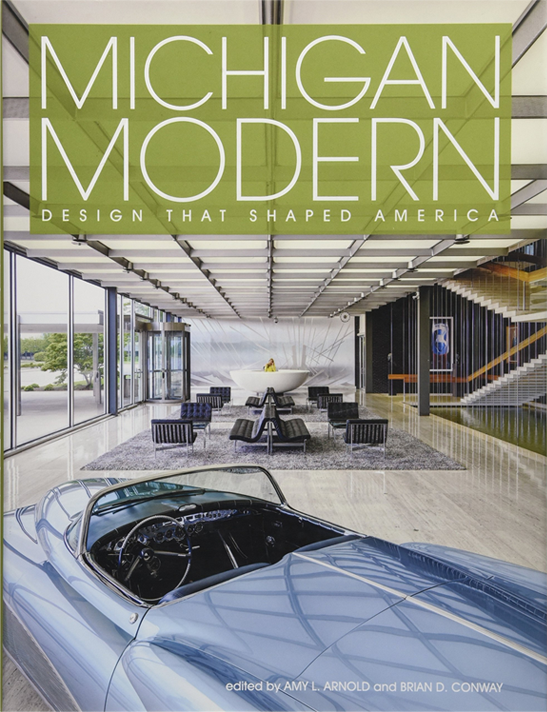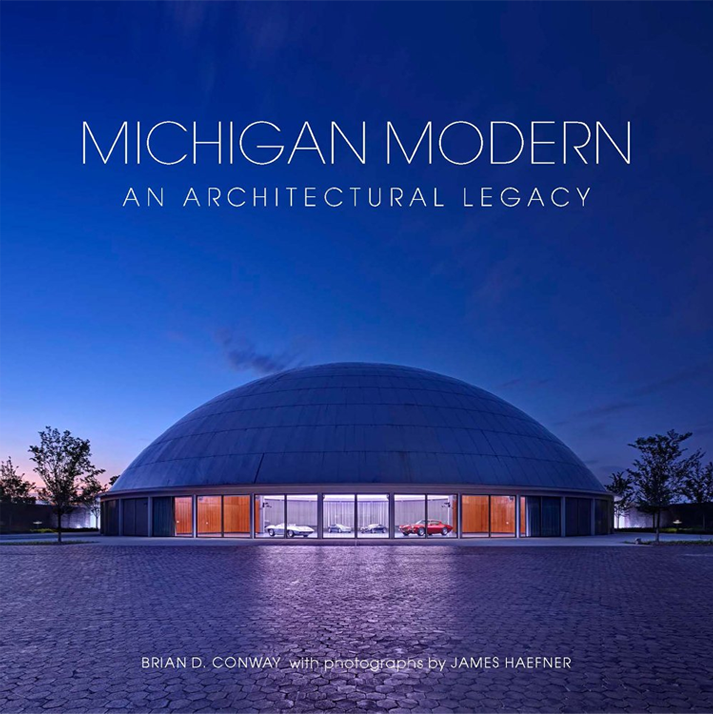Architects
Gunnar Birkerts & Associates
Born in Latvia, Gunnar Birkerts came to America in 1949 and began working with Eero Saarinen on the General Motors Technical Center in 1951. Birkerts joined Minoru Yamasaki’s firm in 1959 and was chief designer for the Reynolds Metals Building (1959) in Detroit. Birkerts taught architecture at the University of Michigan from 1961 to 1990. He gained international acclaim after establishing his own firm in Birmingham, Michigan in 1963.
Alfred Caldwell, Chicago
Trained as an architect, Alfred Caldwell became a landscape designer working with Jens Jensen, creator of the Prairie Style of landscape architecture, for the Chicago park system. Caldwell worked with Ludwig Mies van de Rohe at the Illinois Institute of Technology (IIT) and collaborated on the campus’ landscape design. Caldwell’s Lily Pool near Lincoln Park in Chicago is a National Historic Landmark.
Marshall Fredericks
A native of Illinois, Fredricks was a student of the Swedish sculptor Carl Milles and taught at the Cranbrook Academy of Art from 1932 to 1942. He produced a large body of public art including Belle Isle’s Barbour Memorial Fountain (1936) in Detroit. His work is known nationwide.
Jude T. Fusco
A graduate of the University of Toronto, Fusco established his Ferndale, Michigan-based firm in 1962. His commissions included a public housing project in Pontiac (1969) and Trolley Plaza (1980), an innovative 28-story concrete Detroit apartment building.
Green & Savin
Joseph Savin, a University of Michigan (U-M) graduate, was associated with Eero Saarinen and Associates from 1956–58 before partnering in 1960 with Isaac Green, a U-M and Illinois Institute of Technology graduate. They designed a number of apartment buildings.
Gould, Moss & Joseph
Nathaniel Gould had a long career in the Detroit area, designing the Wayne County Training School (1920) in Northville and Eloise Hospital (1932) in Westland. Jacqueline Joseph, one of Michigan’s few female Modern architects, was a resident of Lafayette Park. The firm was known for its Detroit area schools.
Kamp & Mayotte
Ervin E. Kamp, a 1951 University of Michigan graduate, had his own firm from 1958 to 1964. Kamp Mayotte & DiComo was its successor firm. Ronald E. Mayotte later had an office in Troy, Michigan. The firm designed Parkvue Hospital in Westland, Michigan, and a number of churches in Southeast Michigan.
Carl Koch & Associates, Boston
Carl Koch graduated from the Harvard Graduate School of Design in 1937. A pioneer in pre-fabricated housing, Koch designed the TechBuilt Housing System which utilizes standardized modules for floor, walls, and roof. Over three thousand of these affordable homes were built across the United States in the 1950s including one in Rochester Hills, Michigan. He later experimented with prestressed concrete with his Techcrete system.
Lorenz & Paski
Willard Lorenz and Bernard Paski established their firm in 1960. Lorenz was a graduate of the University of Michigan and taught at the Detroit Institute of Technology. Paski received his training at the University of Detroit.
Madison & Madison Architects, Cleveland
A graduate of Howard University and the Harvard Graduate School of Design where he studied under Walter Gropius, Robert Madison is believed to be the first licensed African American architect in Ohio. Madison and his brother Julian, a civil engineer, formed the firm in Cleveland, Ohio, in 1954. With five branch offices, including one in Detroit, it became one of the largest African Americanowned architectural firms in the United States.
Ludwig Mies van der Rohe, Chicago
One of the greatest architects of the twentieth century, Mies van de Rohe, along with Le Corbusier and Walter Gropius, was a master of the International style. Mies headed the Bauhaus school in Germany in the late 1930s. As war approached, he left Europe in 1937 to head the architecture department at the Illinois Institute of Technology (ITT) in Chicago. His best work includes the glass Farnsworth House in Plano, Illinois (1946), Crown Hall at ITT (1956) where he introduced the glass curtain wall to America, and the Seagram’s Building in New York City (1958).
Eberle M. Smith Associates
Smith began his career with Albert Kahn Associates and established his own firm in 1942. He became nationally known for his progressive, student-centered school designs. In Michigan, Smith designed Edsel Ford High School (1955) and Henry Ford Community College (1961) in Dearborn and Lincoln Park and Flint High Schools (1960).
Clifford N. Wright & Associates
A graduate of Lawrence Institute of Technology, Wright established his firm in 1949. He also partnered with Richard Pollman and Irving Palmquist to create Home Planners, Inc., a Detroit-based firm that designed hundreds of Modern house plans for the average homeowner and published them in a series of house plan books between 1950 and 1970. Wright contributed house plan designs to several national magazines, such as House & Garden and Better Homes & Gardens.


Available at your local book store and online.
Michigan Modern in Print
“Great historical review of the much under- appreciated Detroit/ Midland area Architects and designers. Written by extremely knowledgeable writers.”
The Great Lakes State has always been known for its contributions to twentieth-century manufacturing, but it’s only beginning to receive wide attention for its contributions to Modern design and architecture.
